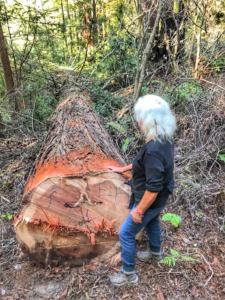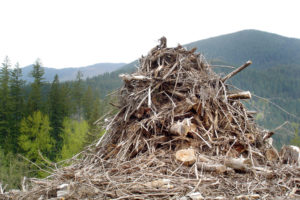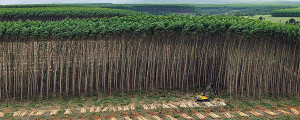Save Our Forest Roots!
Forests around the world are being destroyed for wood and pulp and are being replaced by monoculture tree plantations that supply global markets with palm oil, wood fibers and other commodities like beef, soy beans, sugar cane, and corn.
Under the guise (LIES) included in the Healthy Forest Initiative, forests are being ravaged for biomass burning for energy.Logging our forests has started to increase with abandon – the US Forest Service changed the way the approve logging operations by increasing the area that doesn’t require public input – USFS has abandoned most of the NEPA regulations that also governed how the agency notified the public of new mining, fracking, and building of roads into public lands/forests. Trees are harvested and the under story of small trees and brush are scooped up and trucked off to be fired or co-fired in coal burning power plants.
Reclamation of still live and dead trees after forest fires remove the elements needed for regrowth and regeneration – seeds that require fire to begin the process of growing new trees and plants – the ash and charred wood nourishes and contributes to new and healthy soils – food and nutrients for microscopic life – and homes for birds and mammals as well. Rushing in and clearing the land ensures these areas remain barren and more susceptible for landslides and top soil loss as rain washes the soil into streams and rivers that can choke fish and other water creatures.
Our forests are the lungs of Mother Earth. They not only take in the CO2 we emit and return precious oxygen, they ensure fresh water aquifers are replenished that also supply water to lakes, rivers, mountain springs, streams, and fresh water wells across the world.
Healthy forests nurture and sustain the rich and delicate biodiversity made up of plants, animals, microorganisms, insects, birds, and of course trees. We must stop doing all the wrong things if we are to ever bring balance and rebuild the systems of the natural world that ensures the continuation of the human race.
Below you’ll find articles and blogs, current and ongoing threats, and calls to action when needed:
Jackson Protestors Push Back on Calfire’s Hired Goons Nonviolently
Wall Street Firm Makes Wager on Carbon-Offset Forests
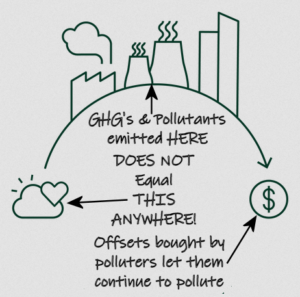 Oak Hill Advisors LP, which manages $52 billion and is best known as a big debt investor, is teaming up on the venture with Bluesource, a firm that creates and sells carbon credits. The companies said they expect to buy roughly one million acres of North American woodlands and manage the properties to generate so-called forest offsets.
Oak Hill Advisors LP, which manages $52 billion and is best known as a big debt investor, is teaming up on the venture with Bluesource, a firm that creates and sells carbon credits. The companies said they expect to buy roughly one million acres of North American woodlands and manage the properties to generate so-called forest offsets.
GREEN DIAMOND CLEARCUTS FOREST AMIDST THE COLLAPSE OF OUR CLIMATE
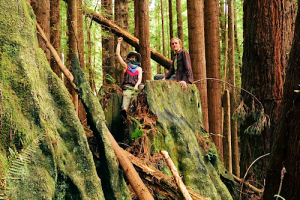 Forest activists in Northern California recently sent an open letter to a timber corporation in Northern California while simultaneously putting up a new tree-sit in a threatened redwood forest. The company, Green Diamond Resource Co., is notorious for its bad logging practices. Despite their clearcutting and encroaching into habitat of threatened and endangered species, GDRC managed to get “sustainable” certification from the Forest Stewardship Council and the Sustainable Forestry Initiative. This forest lies just north of an area that has been protected from additional logging by tree-sitters since 2012.
Forest activists in Northern California recently sent an open letter to a timber corporation in Northern California while simultaneously putting up a new tree-sit in a threatened redwood forest. The company, Green Diamond Resource Co., is notorious for its bad logging practices. Despite their clearcutting and encroaching into habitat of threatened and endangered species, GDRC managed to get “sustainable” certification from the Forest Stewardship Council and the Sustainable Forestry Initiative. This forest lies just north of an area that has been protected from additional logging by tree-sitters since 2012.
False Biomass Energy Industry Claims Demand a Response
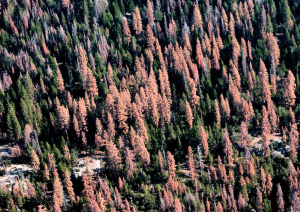
Arial shot of a forest with trees dying from pests, pathogens, and/or climate change. Photo Credit Duke.edu
As scientists with expertise in forest and fire ecology and climate change in California, we feel compelled to expose the many false claims from the biomass industry in your May 19 article (“In California, A Push Grows to Turn Dead Trees into Biomass Energy”). These claims fly in the face of the best available science. Creating effective forest, fire, and climate policy depends on getting the facts right.
US Forest Service MUST Continue to Consult With Public on ALL Projects!
 The United States Forest Service (USFS) is proposing to eliminate public participation and virtually abandon their legal and moral responsibility by significantly changing how it complies with the National Environmental Policy Act (NEPA).
The United States Forest Service (USFS) is proposing to eliminate public participation and virtually abandon their legal and moral responsibility by significantly changing how it complies with the National Environmental Policy Act (NEPA).
Adhering to these rules requires among other steps, to conduct environmental impact studies (EISs), allow for public review and must take into account not only scientific study of the possible impacts and threats but our approval or denial for proposed activities within public lands. These projects include logging, pipelines, and road building through 193 million acres of the last remaining wild places that belong to WE the PEOPLE!
Executive Summary: Genetically Engineered American Chestnut White Paper
 The GE AC is promoted as a test case to sway public opinion toward supporting the use of biotechnology for forest conservation, and to pave the way for the introduction of other GE trees. However, most other GE trees in development would be grown in industrial monoculture plantations, for the commercial production of timber, pulp and biofuels.
The GE AC is promoted as a test case to sway public opinion toward supporting the use of biotechnology for forest conservation, and to pave the way for the introduction of other GE trees. However, most other GE trees in development would be grown in industrial monoculture plantations, for the commercial production of timber, pulp and biofuels.
Giving new life to native trees
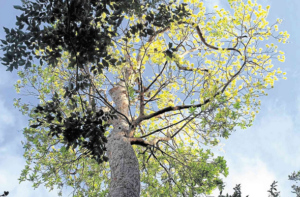
Bagoadlau, the hardest and densest of all local ironwoods
Giant pandas, Philippine eagles, African elephants and Bengal tigers are not the only species facing extinction. Some trees found only in the Philippines are, too.
Widespread logging, the indiscriminate conversion of primary forests into commercial plantations, housing developments, infrastructure projects and the steady march of climate change have all combined to push a number of native tree species to the brink of extinction.
Helping make sure that the Philippines will not lose these endemic trees vital to maintaining biodiversity is Energy Development Corp. (EDC), the renewable energy unit of the Lopez group of companies, through its groundbreaking Binhi (seed) program.
Europe’s renewable energy policy is built on burning American trees
FAO definition must recognize that plantations are not forests!
The State of the forest movement in the era of Trump: Ideas for Strengthening Our Collective Work
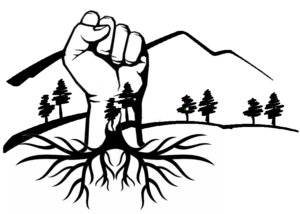 Trump is waging a war on both communities and the environment. The forests of the U.S. are going to be hit hard at the hands of Trump and his ultra-right wing band of robber barons.
Trump is waging a war on both communities and the environment. The forests of the U.S. are going to be hit hard at the hands of Trump and his ultra-right wing band of robber barons.
At the same time, the forest protection movement in this country has fragmented and communication amongst us has quieted since its height in the 1990s.
With this in mind, we have reached a critical moment for the movement for forest protection in the U.S.
These combinations of factors are leading many in the movement to begin conversations about regenerating and unifying forest protection efforts across North America. That is what we plan to discuss at a workshop at the 2017 Heartwood Forest Council in May.

